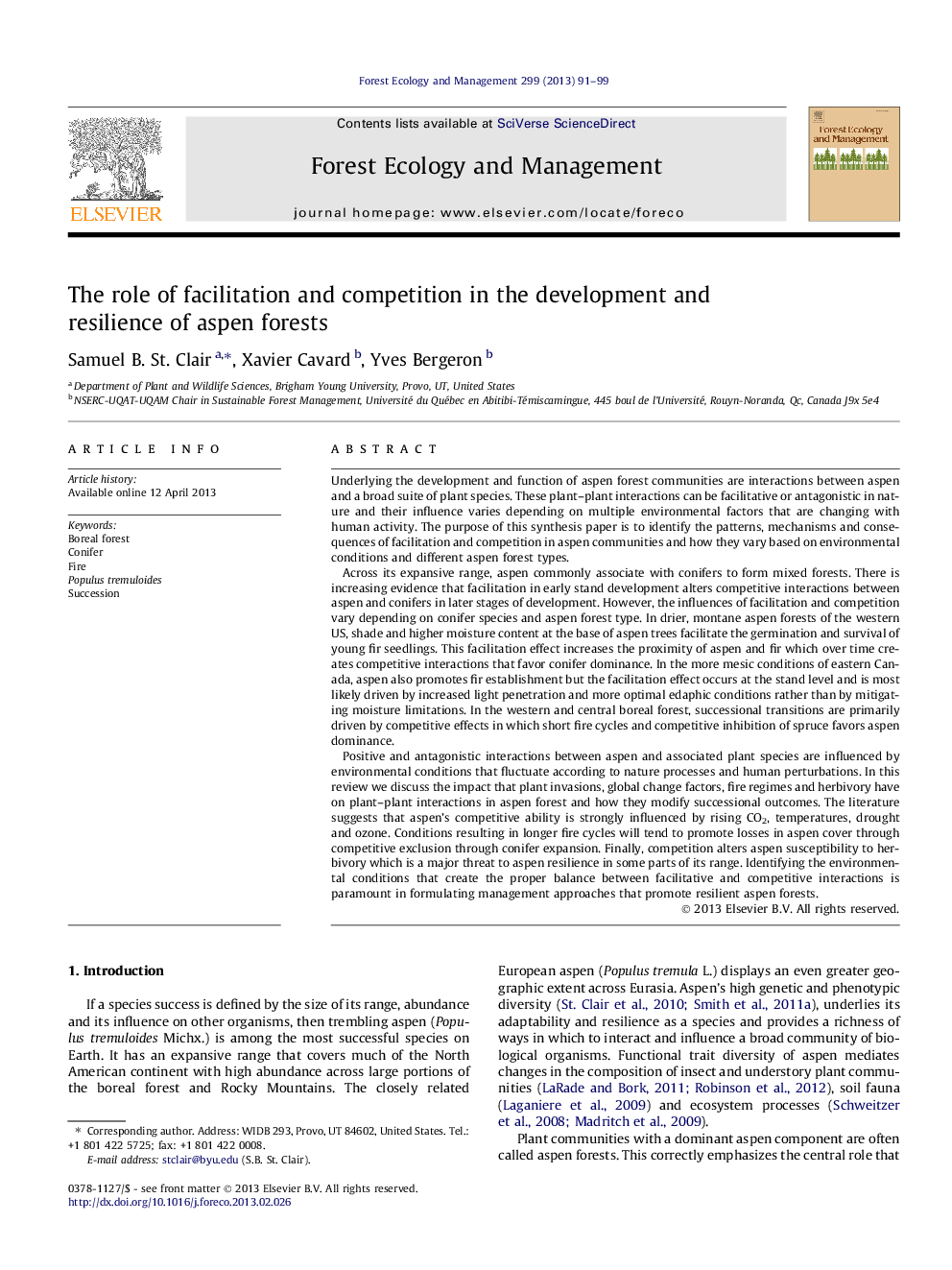| کد مقاله | کد نشریه | سال انتشار | مقاله انگلیسی | نسخه تمام متن |
|---|---|---|---|---|
| 86959 | 159225 | 2013 | 9 صفحه PDF | دانلود رایگان |

Underlying the development and function of aspen forest communities are interactions between aspen and a broad suite of plant species. These plant–plant interactions can be facilitative or antagonistic in nature and their influence varies depending on multiple environmental factors that are changing with human activity. The purpose of this synthesis paper is to identify the patterns, mechanisms and consequences of facilitation and competition in aspen communities and how they vary based on environmental conditions and different aspen forest types.Across its expansive range, aspen commonly associate with conifers to form mixed forests. There is increasing evidence that facilitation in early stand development alters competitive interactions between aspen and conifers in later stages of development. However, the influences of facilitation and competition vary depending on conifer species and aspen forest type. In drier, montane aspen forests of the western US, shade and higher moisture content at the base of aspen trees facilitate the germination and survival of young fir seedlings. This facilitation effect increases the proximity of aspen and fir which over time creates competitive interactions that favor conifer dominance. In the more mesic conditions of eastern Canada, aspen also promotes fir establishment but the facilitation effect occurs at the stand level and is most likely driven by increased light penetration and more optimal edaphic conditions rather than by mitigating moisture limitations. In the western and central boreal forest, successional transitions are primarily driven by competitive effects in which short fire cycles and competitive inhibition of spruce favors aspen dominance.Positive and antagonistic interactions between aspen and associated plant species are influenced by environmental conditions that fluctuate according to nature processes and human perturbations. In this review we discuss the impact that plant invasions, global change factors, fire regimes and herbivory have on plant–plant interactions in aspen forest and how they modify successional outcomes. The literature suggests that aspen’s competitive ability is strongly influenced by rising CO2, temperatures, drought and ozone. Conditions resulting in longer fire cycles will tend to promote losses in aspen cover through competitive exclusion through conifer expansion. Finally, competition alters aspen susceptibility to herbivory which is a major threat to aspen resilience in some parts of its range. Identifying the environmental conditions that create the proper balance between facilitative and competitive interactions is paramount in formulating management approaches that promote resilient aspen forests.
► Facilitation and competition interact to structure aspen–conifer forests.
► Influences of facilitation and competition vary depending on conifer associations and aspen forest type.
► Facilitation effects appears to be particularly strong in drier western montane forests.
► Aspen’s competitive ability is affected by climate conditions, global change factors, herbivory and fire.
► Competition can stimulate and compromise aspen defense.
Journal: Forest Ecology and Management - Volume 299, 1 July 2013, Pages 91–99